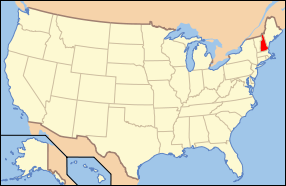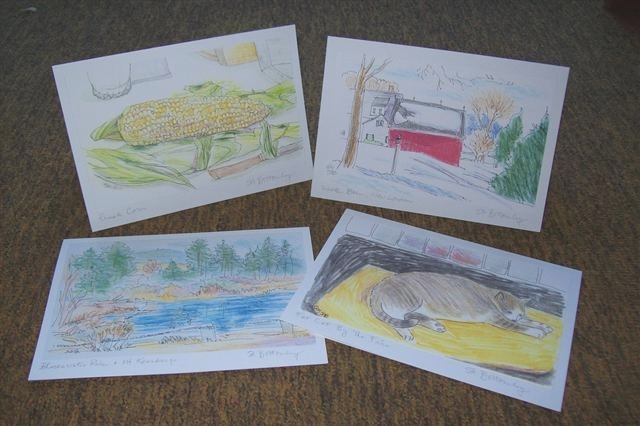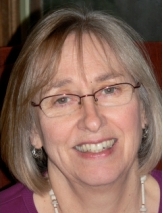New Hampshire once flourished with mills based on water power. The topography of the state produces streams and rivers with fast moving currents.
Most of New Hampshire’s mills are no longer functioning as mills. The still solid, brick and granite buildings, are repurposed with new uses. Small industries, offices, housing, and colleges occupy the high ceilinged rooms. Here at the Salmon Falls Mills, at the border with the state of Maine, over 80 artists create in the well lit studios. The town library has found a wonderful home here too.
Two granite benches along the river caught my attention. My hot spicy chai tea, set down nearby, I began to sketch in charcoal. The clear cool day produced sharp shadows. Then out came the watercolor set, then my favorite colored pencils as a last step.
To the far right, you see the river, the falls over the rocks, a bridge over the river, and a passing train on the top level.
After pausing to study my composition on paper, I noticed the grassy foreground without much detail. So I looked more closely at the hill. And what did I see? My shadow, complete with my sketchbook, and my left hand holding the pencil. Perfect, my shadow on the grass became part of the drawing.
Rindge, NH was the 200th town in my DRAW-NH project. After roaming around quite a bit, I stood on the sidewalk in front of the library for this composite view.
In fact, I had walked all the way up the hill to the bandstand on the far left. So when designing my composition, the bandstand was included it even though it is really behind some trees. I enjoy making compositions which are almost like maps. They clarify the spacial positions of things of interest.
The large white wooden clad building in the center is the town hall. It was built as a meeting house in 1796, and acquired by the town in 1839. The town rents out the second floor to a local religious group. Or first floor, depending how you count them.
The sign is in front of the town library. You can see the walkway leading to the right. It was summer time and the library shows movies for the children on school vacation.
The odd and unusual tower to the right tower is part of a private residence.
The house really is orange sherbet color. Or sorbet, to be French. This boxy style of architecture dates from approximately mid 1770s to early 1800s. The red box is a barn. Red was an inexpensive color, made from iron oxide. Many houses were originally left unpainted, whitewashed, or slapped up with whatever was available. The more money an owner had, the more pigment he could buy, and the brighter the house might be. The tradition of white painted houses only dates from the 1930s according to my historical advisor.
This was done during November, a transitional season here. One tree still has its yellow leaves (they will soon float to earth); the purplish tree is a bare deciduous tree. The shadows are long, but the grass is still quite green. No snow has fallen yet. The dark green trees are evergreens and will retain their fragrant needles all winter.
The main road turns sharply to the right. Two yellow directional arrows assist the driver.
Curves in roads appeal to me, and here we have a double curve. Or a parallel single curve. And two bell towers, one on a church and one not. Bell towers were necessary to strike the hour, or to call villagers to services or school classes. They were also used to indicate an emergency such as a fire.
Building styles will shift subtly from one part of the state to another. Here we have a tiered stack of building blocks, piled up like children’s toys. The tops are both domed, and with weather vanes.
The building on the left with the old plow on the lawn is Austin Hall, the home of the Strafford Historical Society Museum and formerly of the Austin Academy, a secondary school. We would now call this a high school. Students boarded in the town if they lived far away. It is no longer a school but has recently been restored as a community meeting space. The windows and doors are decorative and unusual.
The white wooden building on the right is the 3rd Baptist Church. I find it interesting that the architecture is so similar between a church and a school that was never associated with a religious group.
The building in the middle is a home, and exhibits the ‘connected’ building style of central New England architecture. A small out building was often moved rather than building a new one. Very large buildings were moved too, usually in winter, on skids or rollers on packed snow roads, pulled by oxen.
The white wooden-clapboarded First (and only) Baptist Church in New London, NH. sits on a corner on Main Street. We are looking at it through the beautiful window of the Whipple Town Hall. In the tower is a Revere Bell.
Boston, Massachusetts resident Paul Revere, 1734-1818, was an extremely talented silversmith. Examples of his candlesticks, teapots, buckles, and other domestic wares are on display at the Boston Museum of Fine Arts. Besides iron casting and copper sheet rolling, he is best remembered for his bronze bell factory. Between 1792 and 1828, his foundry cast 398 bells of all sizes.
Henry Wadsworth Longfellow immortalized Revere in his poem “The Midnight Ride Of Paul Revere”. This poem refers to Revere’s activism as an American patriot in the years leading up to the American revolution.
This mountain caught my eye, and my pencil because it looked volcanic in shape. In the very middle is a narrow and deep canyon. And in the lower left I drew another canyon which showed colored layered rocks, appearing sort of red and white.
I am not sure what state this is. Maybe California, or Utah. We were flying from Chicago to LA. I guess it doesn’t matter what state it is since we are seeing nature without map boundaries. It is all planet Earth.
This is the view out the door of our motel room in Anaheim, California. We were there, nine people, for seven days, four theme parks, three grandchildren, two sets of grandparents, and a partridge in a pear tree. Just kidding on that bit.
As a northerner, it is hard for me to see the point of palm trees. Good for dates and coconuts I’ve heard. But shade, no. The tops look like sky scribbles. The tree trunks resemble legs of a giant creature. But when I see palm trees, I know I am on vacation.
My very first palm tree sighting was at age twenty, in Menton, France. Off the train I stepped, from gloomy grey (but nice) Dijon where I lived, into azure skies, with palms, and lemons growing right on the trees. Stunned, I plopped onto a park bench. The sun was warm, and the scent citrusy. The wonder of it all.
The Côte d’Azur (or the French Riviera as we say in English) was the first place I ever saw where the mountains met the sea.
In July we drove to Colebrook near the top of the state of NH, to stay over two nights. Near Colebrook is the tiny town of Columbia. I drew the conical fir trees marching over the steep hills like rows of toy soldiers. Each one is destined to become a family’s Christmas tree. Eight to ten years pass from seedling to full cutting size. And today’s customers demand a perfect shape, which means annual pruning.
I miss the old kind of trees, which were always more sparely branched on one side. That is the side that goes against the wall. The tree would get twirled around, and the family members would chime in as to the ‘best side’ of the tree. And I miss having space between the horizontal branches, where you can see right through the tree and hang the heaviest ornaments. And the lead (!) icicles hung nicely.
And sometimes we kids would find a bird’s nest in the tree. Usually the tree had a crooked top. Now that is nature.
Burdick’s, a restaurant, cafe, and chocolatierie in Walpole, NH, has the BEST hot chocolate. I can taste the chocolate all the way home, an hour and a quarter to my house. They have outlets in Boston and New York City too, but I go to the one in New Hampshire. In the fancy, tiny gold foil box is one scrumptious truffle to savor later.
Tuba Christmas concerts were started in New York City in 1974, and have since spread world wide. As the name implies, only brass wind instruments are supposed to be on stage. There is one semi-hidden, non-brass instrument hiding in the back row—a double bass, which the musician and the conductor refer to as a ‘wooden tuba’!
Heavy wool sweaters, and Santa hats are the dress of the day. And plaid flannel shirts.
Happy Holidays to all, and a wish for peace in the New Year.

























































